Taj Mahal in Agra, is renowned as one of the world’s wonders and is the embodiment of passion and true love. In honour of his adored wife, Mumtaj Mahal, the renowned Mughal emperor Shah Jahan constructed the Taj Mahal. The Taj Mahal’s architectural splendour and beauty have never been equalled. It symbolises the pinnacle of Mughal architecture and is regarded as the most exquisite structure ever constructed by the Mughal emperors. The Taj Mahal is a component of a complex that includes a mosque, a gorgeous garden, a magnificent water system, and a stunning gateway.
Location
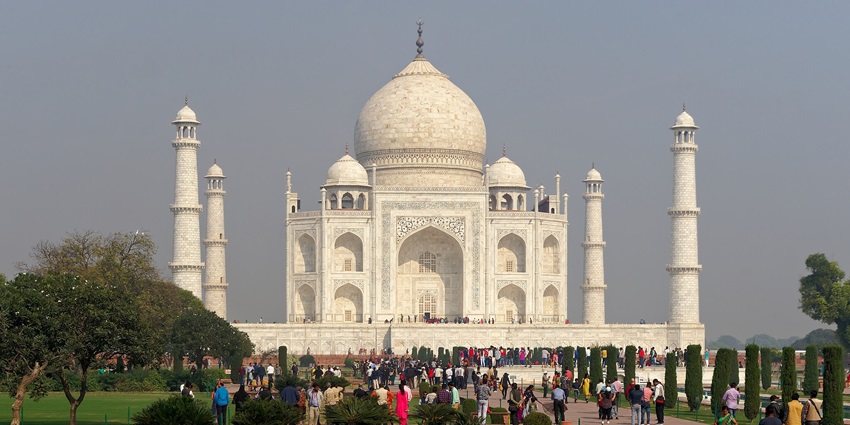
Photo: Jakub Hałun / Wikimedia Commons
Taj Mahal Fort is in Agra in the northern Indian state of Uttar Pradesh. It is conveniently reachable by road and is situated on the banks of the Yamuna River.
Suggested Read: Top Things To Do In Mathura
How To Reach Taj Mahal
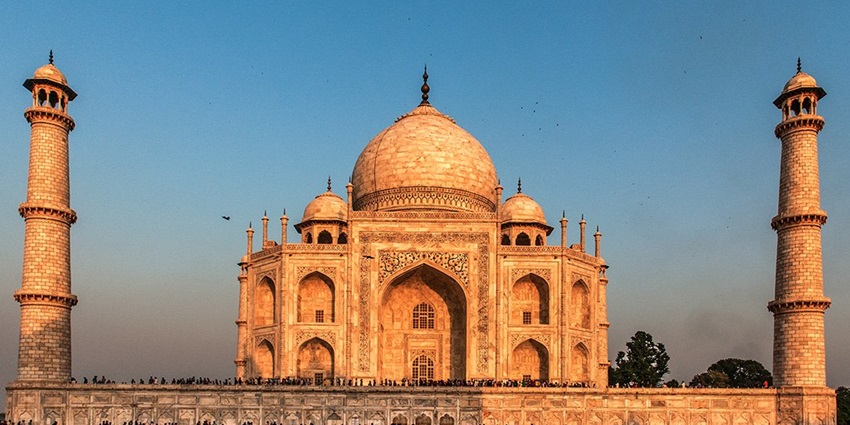
Photo: B.Ramana Kumar, / Wikimedia Commons
By Air: Taj Mahal is near the Agra Airport (Kheria Airport). However, this airport has limited connectivity with a few domestic flights. Therefore, you can take a flight to Delhi and then take a train or bus to Agra, the home of the Taj Mahal.
By Train: Agra Cantt Railway Station is near the Taj Mahal Fort. It is the primary station in Agra. After reaching Agra take direct autos, and cabs to reach the monument.
By Road: You can travel to the Taj Mahal by road to different places. You can also take buses and autos to reach the Taj Mahal.
Places To Visit Near Taj Mahal
Here is a list of gems nestled near the well known Taj Mahal adding to the historical charm of your expedition:
1. Agra Fort (Lal Qila)
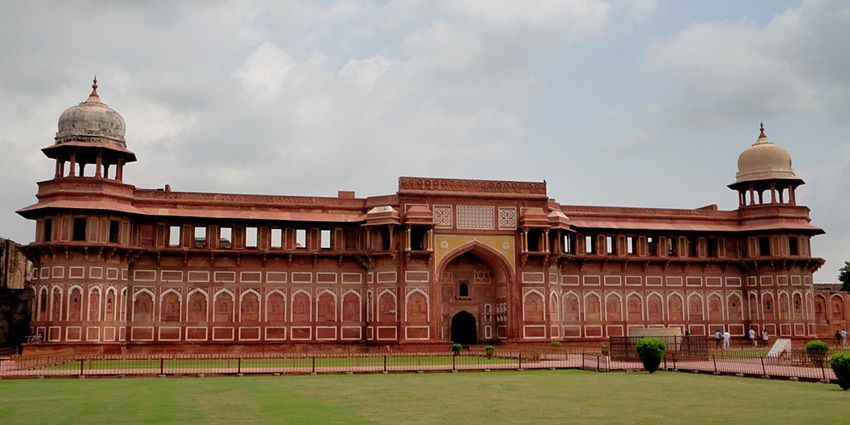
Photo: Karthikeya / Wikimedia Commons
Emperor Akbar ordered the construction of a huge red-sandstone fort on the Yamuna River in 1565, and his grandson Shah Jahan completed the project. The complex of buildings within the fort includes extensive subterranean areas. The open Diwan-e-Aam, where Shah Jahan heard people’s concerns or pleas, comes right before this. The Fort’s other attractions are the white octagonal tower and palace known as Khas Mahal, the palace with walls inlaid with small mirrors, and Diwan-e-Khas, which formerly held Shah Jahan’s fabled Peacock throne and the diamond Koh-I-Noor.
Timings: 6 AM – 6 PM
Suggested Read: Blissful Things To Do In Vrindavan On Your Trip To This Scared Adobe
2. Akbar’s Tomb (Sikandra)
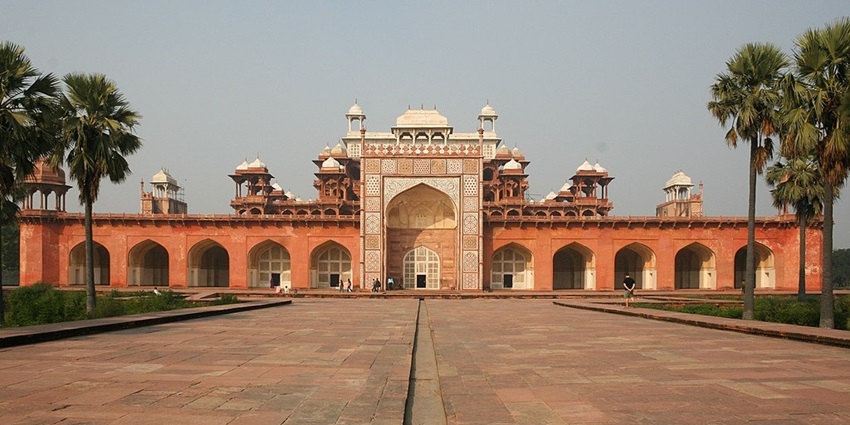
Photo: Diego Delso / Wikimedia Commons
Emperor Akbar constructed the red-sandstone and marble monument, which was later finished by his son Jahangir, and it is situated on the western edge of the city. Beautiful calligraphy adorns the inside, reflecting the principles of Din-e-Ilahi, a religious movement founded by Emperor Akbar. Akbar, the Mughal emperor, is buried in Sikandra, where his tomb is located in a shadowy room. Another draw of the location is the Char Bagh-inspired layout of the surrounding garden.
Location: Near the ISBT bus stand
Timings: 7 AM – 5 PM
3. Mehtab Bagh
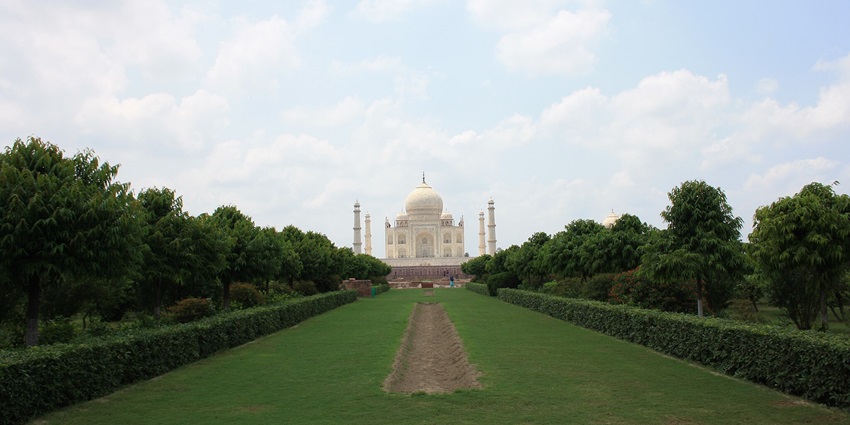
Photo: LittleDwangs / Wikimedia Commons
Mehtab Bagh is situated across from the Taj Mahal on the left bank of the Yamuna River. Emperor Babur initially constructed this park as the final of the 11 parks on the Yamuna’s bank. The square-shaped garden complex is approximately 300 by 300 metres. A doorway at the northern wall and a massive octagonal tank at the centre were discovered during the excavation.
Timings: 6 AM – 9 PM
Suggested Read: Theme Parks In Lucknow
4. Guru Ka Taal
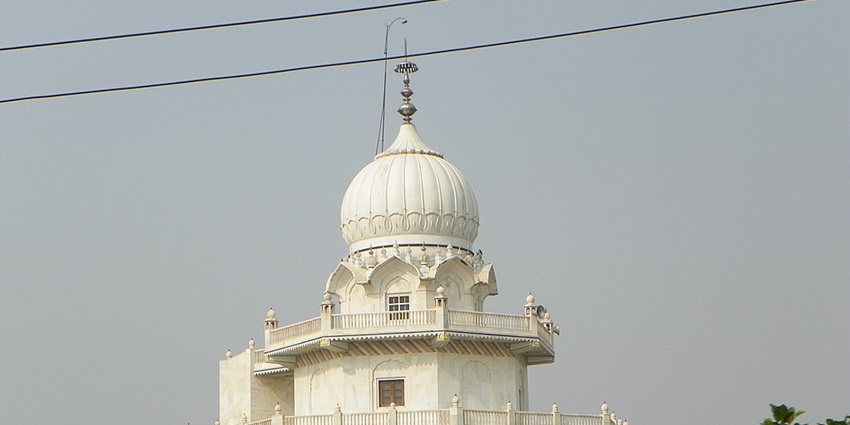
Photo: juggadery / Wikimedia Commons
One of Agra’s most well-known gurudwaras is Guru Ka Taal. Four of the ten Sikh gurus are reported to have visited this location, which dates back to the 1970s when building began. This Gurudwara draws a lot of devotees and tourists and is significant both religiously and historically. This Gurudwara invites visitors from far and wide to marvel at its splendour with its intricate stone sculptures.
Location: near Sikandra Tomb and the ISBT bus stand
Timings: Opens all day
5. Itmad-Ud-Daula
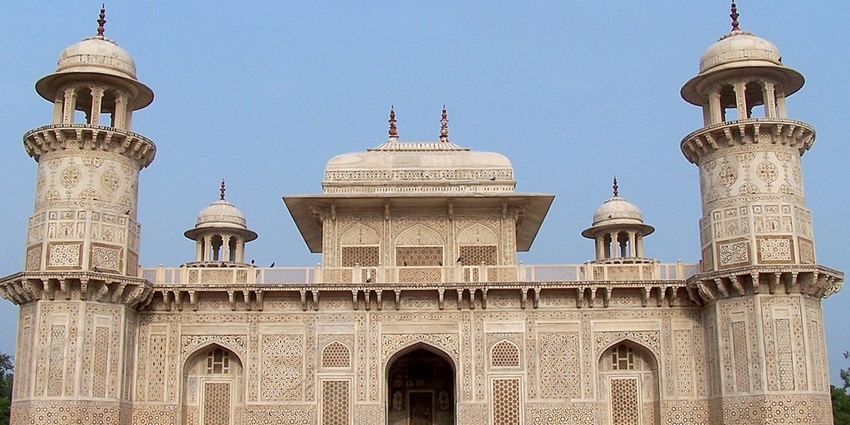
Photo: Aaron Zhu / Wikimedia Commons
Known as the “Baby Taj,” this monument is credited with serving as the model for the Taj Mahal, a wonder of the world. But Itimad-Ud-Daulah’s tomb, with its marble lattice screens and exquisite carvings, is a more delicate piece of art. Nur Jahan, the mother of Shah Jahan (the man who built the Taj Mahal), created the first Mughal building using marble. This fading work of beauty, which serves as the foundation for all marble monuments that exalt Agra.
Location: Eastern bank of Yamuna River
Suggested Read: Alamgir Mosque Varanasi
Where To Stay

Photo: Pixabay / Pexels / Image For Representation Only
Finding a spot to stay close to the Taj Mahal Fort is essential because it’s the best highlight of Agra. These lodging choices are renowned for their friendliness, comfort, and plenty of amenities in addition to their prime location. There are various hotels near the monument including The Oberoi Amarvilas, hotel Atulyaa Taj, Howard Plaza Hotel, Hotel Kamal, Taj Haveli Agra, Taj Inn Hotel, Hotel SBM, etc.
Where To Eat
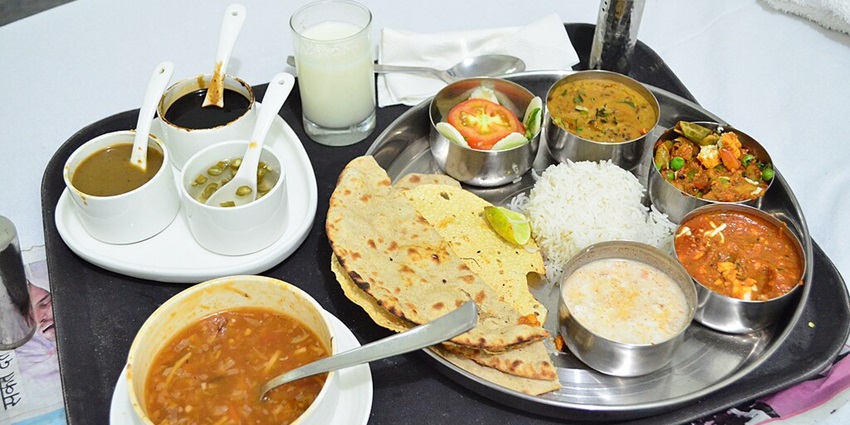
Photo: Prav2991993 / Wikimedia Commons
Agra is known for its variety of food and mouthwatering cuisine. In the morning you can try the famous breakfast of Agra the Bedai, Jallebi and Kachori. For lunch, You can try authentic north Indian food like chole bhature, Rajma Chawal, and Thali with different vegetable curries, naan, rice and dal. You can also try some famous sweets in Agra and don’t forget to buy the famous Petha and Dalmoth for you and your family.
Suggested Read: Things To Do In Agra At Night
Best Time To Visit
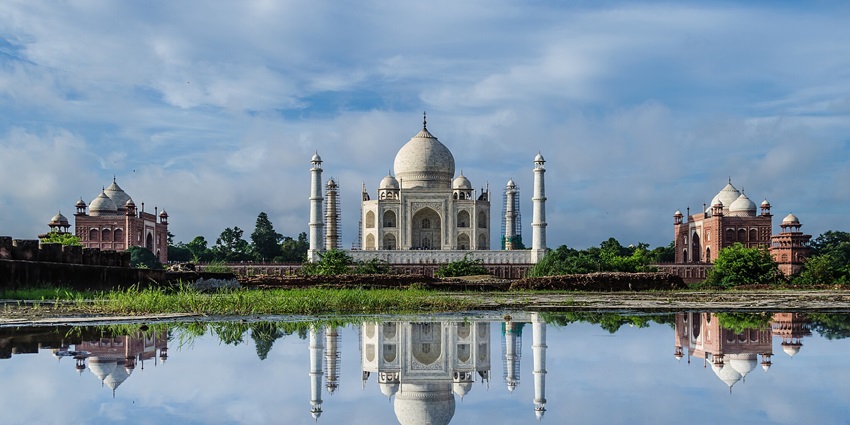
Photo: Antrix3 / Wikimedia Commons
Taj Mahal is made with white marble and red sandstones. The best time to visit the Taj Mahal Fort is October to March due to the pleasant and cold season. It is hard to visit the monument in summer because of the heat and humidity. So, visit the monument in the winter or spring season.
Other Factors To Consider
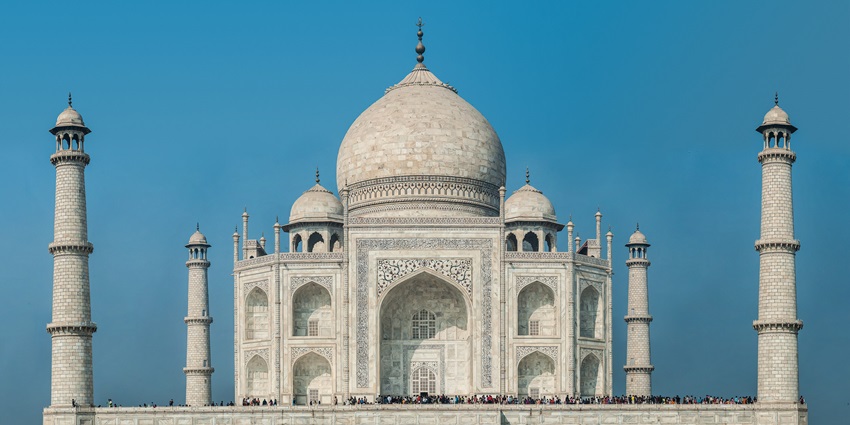
Photo: Asitjain / Wikimedia Commons
- By using dustbins, visitors may help keep the monument tidy and clean.
- Hiring authorised guides and photographers who present their identity cards is recommended for tourists.
- The Taj Museum within the Taj Mahal Complex is free to enter and is open from 10 AM to 5 PM.
- Vehicles that emit pollutants are not permitted within 500 metres of the Taj Mahal.
- It is recommended to keep cell phones off or in silent mode.
- Please refrain from bringing large bags or books inside the monument as this could lengthen the time it takes to get through security.
- It is forbidden to take pictures inside the main tomb.
- Because the monument’s walls and surfaces are historical sites that require special attention, refrain from harming or scratching them.
- Inside the mausoleum, visitors are asked to refrain from making noise.
Suggested Read: Exciting Things To Do In Lucknow At Night
Taj Mahal, which is composed of white marble that appears to change colour depending on the time of day, is influenced by Islamic, Persian, and Indian architectural principles. Discover even more fascinating facts about the Taj Mahal and start organising your hassle-free trip in advance. To make your bookings choose TripXL and enjoy an exciting vacation in Agra.
Cover Photo: Maahid Photos / Pexels


 WhatsApp
WhatsApp
 Twitter
Twitter









